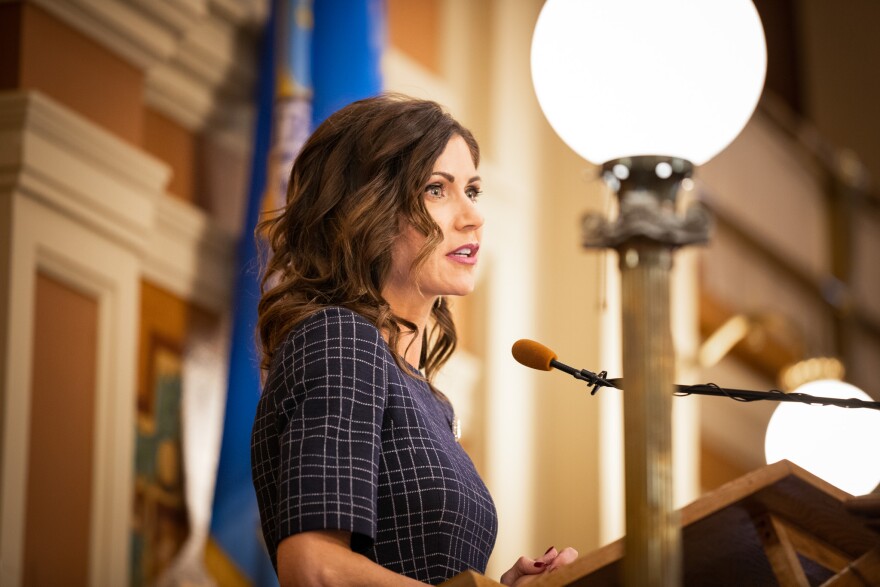Governor Kristi Noem delivers her annual state budget address on Tuesday.
She will update lawmakers on the state’s financial position and her budget priorities.
Unlike most states across the country, lawmakers will be working with a budget surplus.
As we head into the holiday shopping season, one thing is clear—state sales tax revenue is strong.
Right now the state is sitting in a solid financial position heading into the legislative session.
“It’s obviously a different condition than a lot of the rest of the country is in," says Mark Quasney, the state’s economist.
General Fund revenues are up - $30 million more than the legislature anticipated back in March. That’s for a fiscal year that started on July first.
Revenue from tourism spending is down, but Quasney says sales and use tax collections are more than making up for it.
“Part of that is related to the response that the state has taken in terms of economic shutdowns and that, in relation to other states,” Quasney says.
South Dakota never put into place a statewide shutdown or business restrictions. In addition to strong sales tax collections, the state received a lot of one-time money this year. Quasney says record gold extraction and $2 billion dollars’ worth of windfarm development helped boost the state’s bottom line, to the tune of about $13.5 million.
“We wouldn’t expect that level of activity to continue once those projects are done,” Quasney says. “Certainly good news for us now and it’s important. Contributing to both that and the general health of the state’s underlying economy are putting us in a really good position.”
South Dakota also received more than $5 billion in federal stimulus relief money— state government got $1.25 billion of that.
Republican Representative Jean Hunhoff sits on the appropriations committee. She says some of that money paid for state employee’s salaries.
“States could not use it for replacement revenue,” Hunhoff says. “But if they went to—I’ll use an example of law enforcement, corrections, public health—if you’re able to use those dollars, then you’re able to free up what you originally budgeted for those departments.”
Hunhoff says that freed up money for county road improvement projects or for bonus grants to healthcare workers. The money also went toward capital projects at universities.
“We’ve given them one-time dollars to do a design study or to begin their project,” Hunhoff says. “Or to match a donation that would add to that capital improvement project. You’re looking at one time uses of those dollars in trying to get the greatest good out of them.”
Some lawmakers predict there will be lengthy debate on what to do with the remaining money.
“The easiest sessions I’ve been through is when we have no money,” says Republican State Senator Gary Cammack, the incoming majority leader. “Because, when you have no money no one is willing to even make eye contact with you so they don’t become the target of a cut.”
Cammack says when the state does have money a lot of different groups have their hands out.
“For a lot of good reasons,” Cammack says. “But, because there’s going to be more needs than we can fill, even with the kind of surplus we’re going to have. South Dakota does not spend money or create new programs for ongoing expense with one-time money.”
Lawmakers will learn more details about the state’s budget from the governor’s address on Tuesday. Noem will propose her own budget during that address.
Lawmakers will gavel the 2021 session into order on January 12th.



